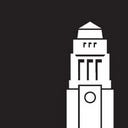Discovering the underwater secrets of the Congo River
The Congo River is one of the world’s largest rivers, second only to the Amazon in size, but far less understood.
Difficulties of access and years of political instability in the Democratic Republic of Congo (DRC), through which the largest section of the Congo flows, means the river has been far less studied than its South American counterpart.
Of over 400 river gauges installed during colonial times to measure the height of the water, only a handful are still operational. In recent decades, powerful satellite technology is enabling measurements to be taken of rivers from space. These measurements feed into models that can predict how rivers will behave under different scenarios and weather conditions. Useful as the satellite data is, however, data taken on the ground — or on the water — are indispensable to ensure the models are accurate.
Accurate models for the Congo are of vital importance. The river basin covers a huge area of central Africa, spanning ten different countries. It is critical for supporting biodiversity, rural livelihoods, transportation and development in the region. All kinds of organisations, responsible for hydroelectric projects, river navigation, wildlife, water supply, irrigation, sanitation and flood risk, need to access robust evidence on the river to underpin their decision making.
In 2017, researchers from the University of Kinshasa in the DRC, the Universities of Leeds and Bristol in the UK, Rhodes University in South Africa and the University of Dar Es Salaam in Tanzania came together to begin to fill this knowledge gap, thanks to funding from the Royal Society and UK government through the Africa Capacity Building Initiative (ACBI). The team undertook fieldwork to help understand the basic mechanics of the river, using technologies never before used on the Congo to gather vital data.
River surveys
Over three years, the international team covered 1700km of the river between Kinshasa and Kisangani, using sonar to measure river depth, and a technique called acoustic doppler current profiling to measure the water flow. They also measured the absolute elevation of the river above sea level, allowing them to map the slope of the river as it makes its way to the sea.
When the team compared this in situ data with satellite data, they realised some unusual aspects of the river had been totally overlooked. They found that the satellite data couldn’t identify sections where the river slope became significantly steeper, where the river narrowed into a single channel. This information is critical for the models to accurately predict the river’s behaviour under different conditions, particularly in terms of flood risk.
Central to the project was the involvement of researchers from the DRC, in particular Professor Raphael Tshimanga from the University of Kinshasa. Professor Tshimanga has since set up the Congo Basin Water Resources Research Centre (Centre de Recherche en Ressources en Eau du Bassin du Congo CRREBaC), of which he is Director, and which is ensuring the monitoring and research continues.
Dr Andy Carr, whose PhD was funded by the University of Leeds as part of the ACBI project, was involved in the field work. He said: “The fieldwork was and is very challenging, as at times the river is more than 10km wide, with archipelagos of islands in the middle. There’s no doubt that global data from satellites is incredibly useful, but our research showed that it can’t be relied on alone.”
Useful data
From the start, the ACBI consortium wanted to be sure the data they gathered could and would be used by those who live and work with the Congo. They involved local communities, government officials and international development agencies in the project right from the start, to ensure the research would meet their needs.
This ethos also underpins the Global Flood Partnership (GFP), whose 2022 annual meeting took place at the University of Leeds. The GFP brought together scientists, operational agencies and flood risk managers to address the paucity of data in some regions and to develop more efficient and effective global flood risk tools. Around 100 delegates from 90 countries around the world attended the event.
Dr Mark Trigg, Associate Professor of Water Risk in the University’s Department of Civil Engineering and Associate Director for Research at water@leeds, was one of the UK leads on the Congo project and has sat on the GFP Steering Committee since 2016.
“The GFP creates important connections between academics and organisations that use the information, so that their questions drive the research,” he said. “That might be international NGOs who want to predict where their support may be needed or insurance companies who cover flood risk around the world.
“Although the Congo River project was about more than flood risk, it’s a good example of how important it is to fill the gaps in data to help us plan for the future, particularly given the increase in extreme weather events caused by climate change.”
Protecting infrastructure
In fact, the information gathered on the Congo is already being used even more widely than first envisaged.
One unusual aspect of the Congo River is that its final kilometres are its steepest section. Rather than creating a delta, like most large rivers, it instead carves a canyon that stretches into the sea floor. This section of coast is used for underwater cabling which is regularly damaged by underwater landslides on these steep slopes.
Dr Trigg is working with colleagues at the Universities of Hull and York to determine the cause of the landslides. He said: “We drew on the data gathered through the ACBI project to see if there was a connection between the river flow and the submarine landslides. In fact, we think that they are caused by a complex mix of factors, of which flooding in the Congo is one.
“Because the Congo plays such an important role in the region, the fundamental fieldwork is providing insights with an even wider impact than we imagined at the time.”
